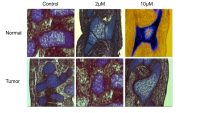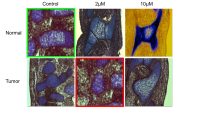Clinical research is the foundation upon which breakthroughs in medical devices and pharmaceuticals are built. To bring a novel therapy to market, researchers must collect data and publish sufficient evidence proving that the product meets its intended purpose.
The evidence shared in clinical research must be accurate, or the consequences can be severe. In 2022, a six-month investigation called into question the validity of results in an integral study of Alzheimer’s disease conducted in 2006.[1] Investigators suspect that some of the figures included in the paper were fabricated, undermining the core findings linking a specific amyloid-β protein assembly to Alzheimer’s disease with neurodegeneration.
According to Science,[2] the investigators “identified apparently altered or duplicated images in dozens of journal articles,” all of which were attributed to the author of the 2006 study, which established the dominant amyloid hypothesis of Alzheimer’s, suggesting that the primary cause of the disease is the accumulation of Aβ clumps, known as plaques, in brain tissue.
As this hypothesis became more widespread, many researchers developed drugs to combat amyloid formation in patients’ brains. Some Alzheimer’s experts now suspect that studies from this researcher have misdirected Alzheimer’s research for 16 years, with potential losses of hundreds of millions of dollars.
While intentional misconduct is a rare occurrence in scientific publishing and very difficult to determine, unintentionally including altered or duplicate images is a common phenomenon that can fundamentally damage all parties involved and damage scientific research, in general.
The Issue with Images
Researchers have multiple resources at their disposal to proactively check written content. They can use software to check for readability, grammatical issues, plagiarism and more to identify and remove issues with the text and increase their chances of publication. Unfortunately, there is a lack of tools to help researchers proactively check for image integrity issues. As a result, they are prevalent in scientific publishing. According to leading image data integrity analyst Jana Christopher, the percentage of manuscripts flagged for image-related problems ranges from 20% to 35%.[3]
Duplication—any form of reusing the same image in different parts of the paper without identifying it—is a particularly common accidental offense. For example, two microscopy images that include an area of overlap would be classed as duplication. Another way duplication can be accidentally introduced is when an image is flipped or cropped during manuscript preparation.


Duplications like these often occur because researchers collect hundreds to thousands of images of specimens while conducting research, either for their own paper or for collaborative research with scientists from different universities. If these images are not properly managed, it can be difficult to distinguish between files, increasing the risk of unintentional duplication.
The Consequences of Image Integrity Issues
Though image duplications might be unintentional, if researchers do not proactively resolve the issues before publication, it can severely harm their reputations.
During the peer review process, editors and reviewers may detect irregularities with the figures and, depending on the severity of the issue, reject the submission. If the infringement is especially severe, the journal and publisher may suspect the author, which can damage the author’s chances of publishing future work with the publishing house.
If these issues continue to go unnoticed once published and lead to incorrect conclusions, other researchers who believe the content is credible, could base experimental procedures or new research on that paper. Working from inaccurate data means that any new data will also be incorrect, negatively impacting the second researcher and wasting any grant funding raised.
If errors are reported post publication, publishers will investigate to determine how the issue occurred, which can take years. During this time, others may doubt the credibility of the researcher, who may find it difficult to publish other content or successfully apply for funding for new research. If the outcome of the investigation leads to a paper retraction, all parties involved including the researchers, the university where the research was conducted and the publishers, can experience reputational damage that is difficult to rebuild.
Solving the Issue
Advances in artificial intelligence (AI) and computer vision have enabled software developers to create automated image-proofing software. This technology allows researchers, universities and publishers to proactively check images as quickly and efficiently as they currently check for grammar issues and plagiarism.
The software scans every sub-image of a research paper to detect suspected duplications and it is able to check an entire paper in one to two minutes. Each image is checked against itself and against the rest of the paper to detect anomalies that researchers should amend before publication.
The current investigation into integral research on Alzheimer’s emphasizes the importance of using the best quality control tools during the publication process. By understanding how image-proofing technologies can more efficiently detect and resolve image duplications before submission, researchers can reduce the risk of damage their reputations, publishers can avoid publishing problematic manuscripts with mistakes and the scientific community can better ensure the integrity of future research.
References:
[1] https://www.economist.com/science-and-technology/2022/07/23/critical-research-on-the-causes-of-alzheimers-may-have-been-falsified
[2] https://www.science.org/content/article/potential-fabrication-research-images-threatens-key-theory-alzheimers-disease
[3] https://ukrio.org/research-integrity-resources/expert-interviews/jana-christopher-image-integrity-analyst/







